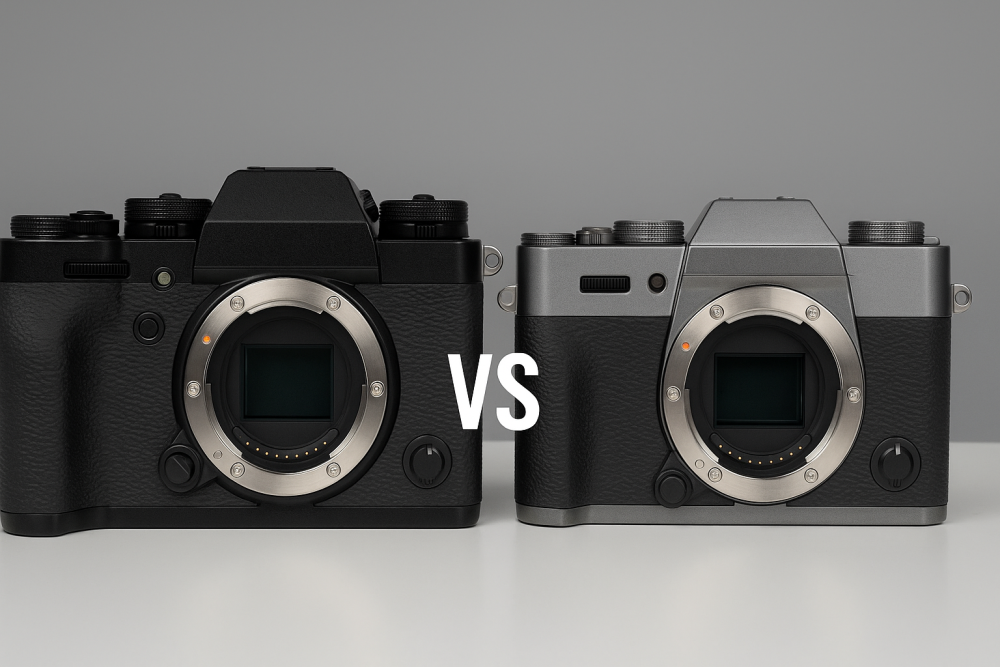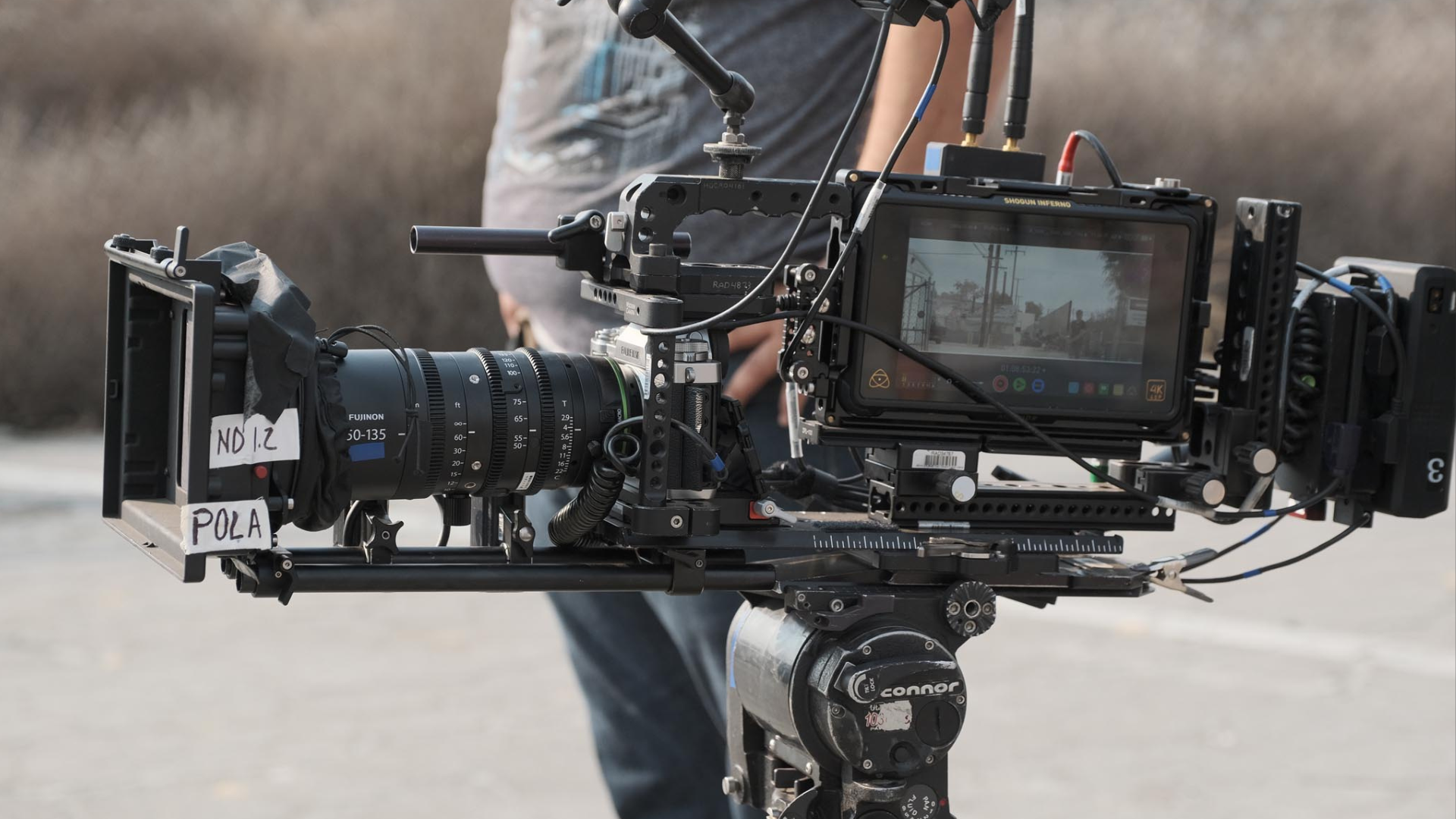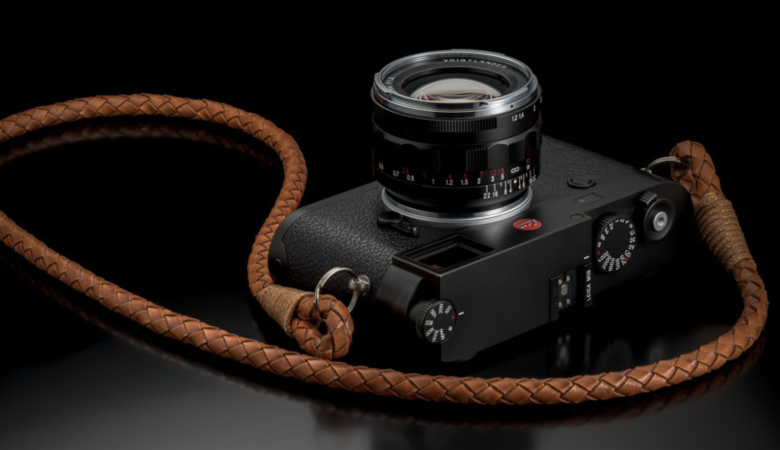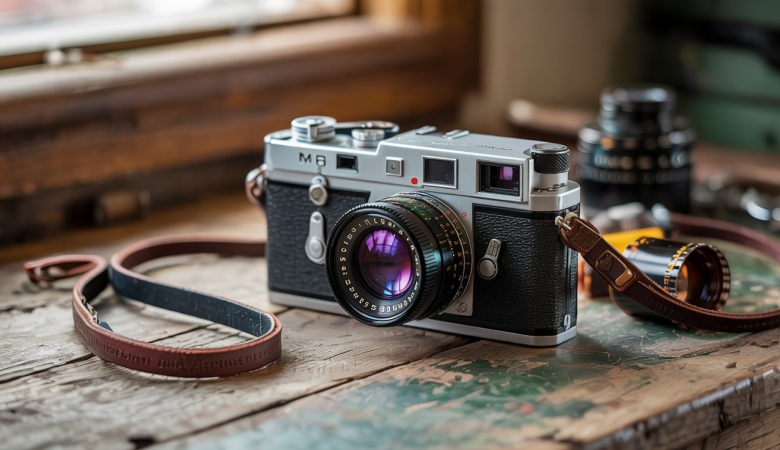Trying to pick between the Fuji X-T3 and X-T30? They look a lot alike, so it can be hard to tell what really makes them different. You might be asking yourself:
- Is the X-T3 worth more money?
- Or is the X-T30 almost the same for less?
If you like taking photos or want to upgrade from your phone camera, this guide is here to help. I’ll explain what each camera does best, how they’re not the same, and which one might suit you better.
Some people take photos just for fun, while others want to get more serious. No matter which one you are, this will make your choice easier.
By the end, you’ll have a clear idea of which one is more appropriate for your style, budget, and plans.
Fujifilm X-T3 vs. X-T30: Overview
Let’s compare both cameras side by side. The Fujifilm X-T3 and X-T30 share a lot under the hood, but they’re meant for slightly different people.
What They Have in Common
- Sensor: Both have a 26.1MP APS-C sensor. That means you get the same image quality from either camera.
- Processor: They use the same X-Processor 4, so speed and color processing are almost identical.
- Film Simulations: You’ll get all the popular Fujifilm film looks in both models.
- Video: Both shoot 4K, though the X-T3 offers more pro settings (we’ll get to that below).
So, if we stop here, you might think they’re the same. But there are key differences.
Main Differences
Even though the X-T3 and X-T30 have the same sensor and processor, they don’t feel the same in real use.
The design, controls, and video options set them apart. These differences can really matter depending on how you like to shoot.
| Feature | Fujifilm X-T3 | Fujifilm X-T30 |
|---|---|---|
| Price (body only) | Around $1,100–$1,200 | Around $700–$900 |
| Build | Weather-sealed, stronger body | Not weather-sealed, lighter |
| Controls | More dials and buttons for manual control | Fewer dials, more touchscreen-based |
| Viewfinder | Larger, sharper EVF | Smaller EVF |
| Video tools | Has a headphone jack, better bitrates | Lacks some pro features |
| Battery life | Slightly longer | Slightly shorter |
As you can see, the X-T3 gives you more control in your hands, great if you like using physical dials and buttons. It also holds up better outdoors thanks to its tougher build.
On the other hand, the X-T30 is easier to carry around and still gives you high-end image quality. It’s a solid pick if you don’t need the extras.
Who Each Camera is For
- Fujifilm X-T3: Great for people who shoot in tough conditions, want full manual control, and do video work. It’s better for serious hobbyists and professionals.
- Fujifilm X-T30: Perfect for those who want top image quality in a small, lightweight body. Great for beginners, travelers, and everyday use.
Price vs. Value
Yes, the X-T3 costs more, but you’re also paying for more controls, a stronger build, and pro-level extras. The X-T30 gives you the same image quality at a lower price, but with fewer bells and whistles.
Which Camera is Best for Different Photography Needs?
Depending on what you want to shoot (sports, video, or professional jobs), one model may fit better than the other. Let’s break it down and see how the Fujifilm X-T3 and X-T30 II handle different needs.
Sports Photography: X-T30 II Wins in Speed and Simplicity
If you enjoy shooting fast-moving scenes like sports games, pets, or kids playing, the X-T30 II might be a better choice. It has the same autofocus system as the X-T3, which means it can lock onto faces and eyes quickly.
It also shoots up to 30 frames per second using the electronic shutter, giving you a good chance of catching the perfect shot. The lightweight body makes it easier to hold and move fast.
While the X-T3 has more manual controls, the X-T30 II lets you focus more on the action and less on adjusting settings. It’s a great match for fast, fun moments.
Video and Filmmaking: X-T3 Is the Better Pick for Serious Shooters
Both cameras can shoot in 4K, but if you plan to make serious videos, the X-T3 has more tools to help you. It can record 4K at 60 frames per second, which looks smoother, especially with motion.
The X-T3 also lets you shoot longer videos without a time limit, while the X-T30 II has shorter clip times. If you care about sound, the X-T3 has a headphone jack to help monitor audio while filming.
It also offers higher video quality and more editing options. The X-T30 II works fine for short videos, casual filming, or simple vlogs, but the X-T3 is better for larger video projects.
Professional Use: X-T3 Feels More Like a Pro Camera
For people working as photographers or videographers, the X-T3 is built to handle bigger jobs. It has a tougher body that’s sealed against rain, dust, and cold weather. This makes it more reliable outdoors or in rough conditions.
It also comes with more physical dials and buttons, which makes it faster to change settings without diving into menus. Its longer recording times and slightly better battery performance are helpful during long workdays.
While the X-T30 II still takes high-quality photos and videos, the X-T3 gives you more control and is built to last longer under heavy use.
So, if you mostly shoot fast action and want something light and easy to use, the X-T30 II fits best. But if you’re making videos or doing professional work, the X-T3 gives you more control and durability to handle serious projects. Both cameras are solid. It just depends on what you need them for.
Is the Extra Cost of the X-T3 Worth It?
The Fujifilm X-T3 costs more than the X-T30 II, but that extra price brings some real upgrades. It has a tougher, weather-sealed body, more manual controls, and a better viewfinder.
For people who shoot outdoors, in rough conditions, or work with clients, these things can make a big difference.
The X-T3 also offers better video features, like longer recording time, smoother 4K, and a headphone jack for sound. If you make videos often, these extras are worth the price.
However, the X-T30 II gives you the same great photo quality. It’s lighter, smaller, and still fast. For someone who doesn’t need pro-level video or a rugged body, it’s a better deal.
So, the higher cost of the X-T3 makes sense only if you need those extra tools. If not, the X-T30 II gives you almost everything at a lower price and that’s a smart pick for many.
Conclusion
The Fuji X-T3 vs X-T30 comparison shows that both cameras are great choices, but they suit different needs.
The X-T3 is built for pros or serious hobbyists who want full control, better video options, and a tough body.
The X-T30 is perfect for beginners or casual users who want the same great image quality in a smaller, simpler, and more affordable camera.
Now that you’ve seen how they compare, think about what matters most to you: ease of use, budget, or long-term features. This guide gave you the clear facts to help you choose the right one.
Still unsure or want to learn more? Check out our other blogs for more simple, useful camera advice!









Leave a Reply